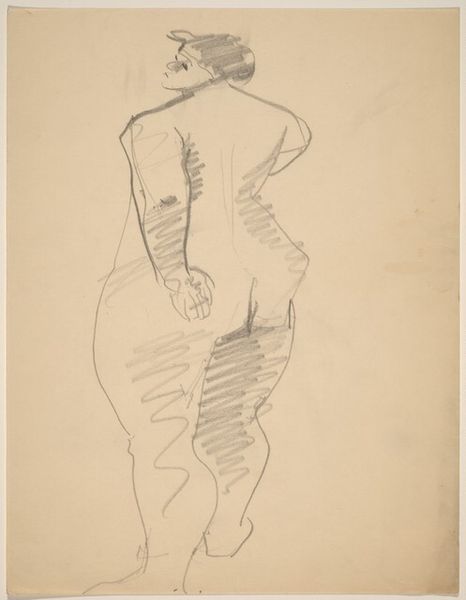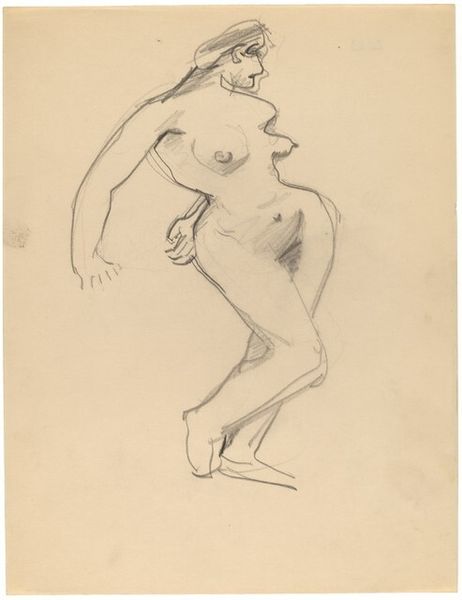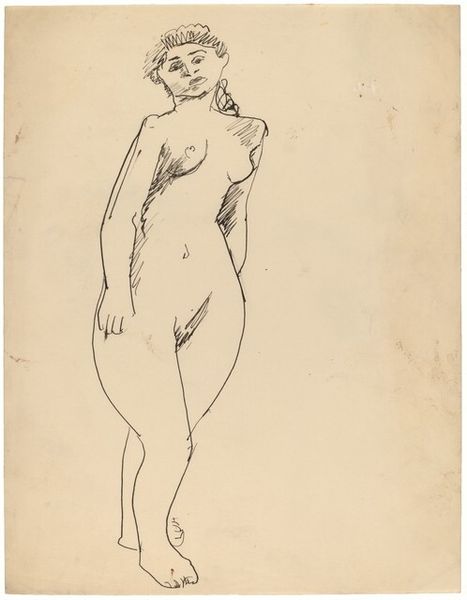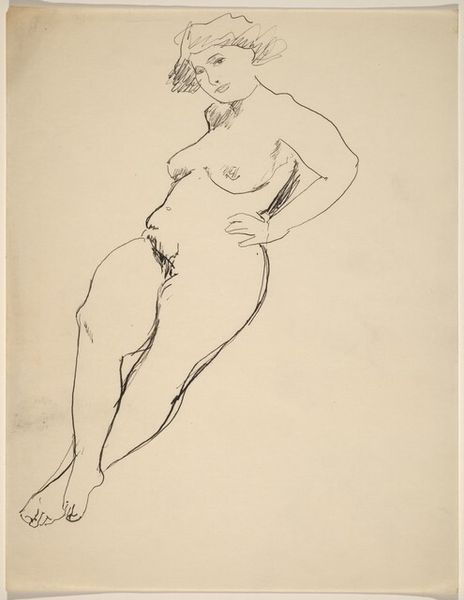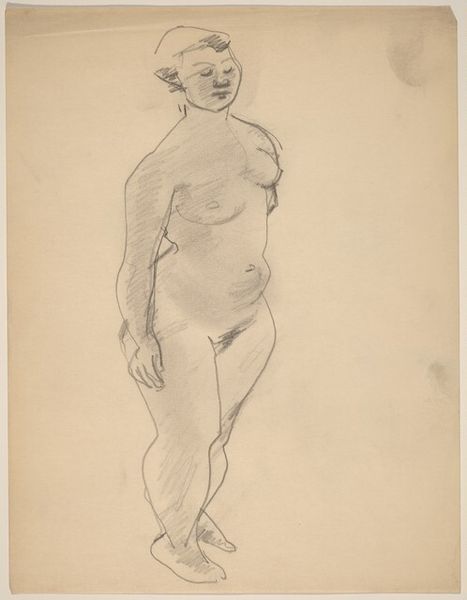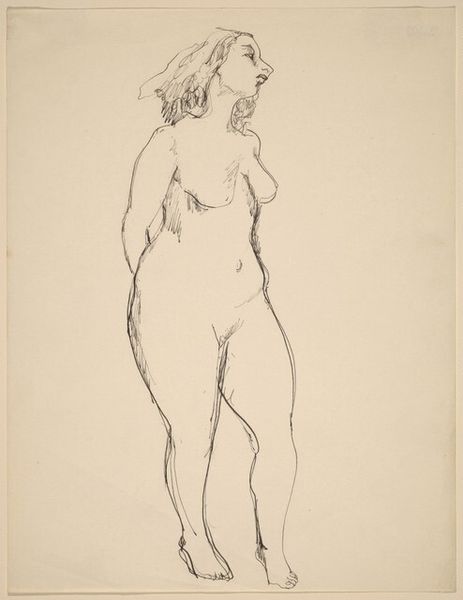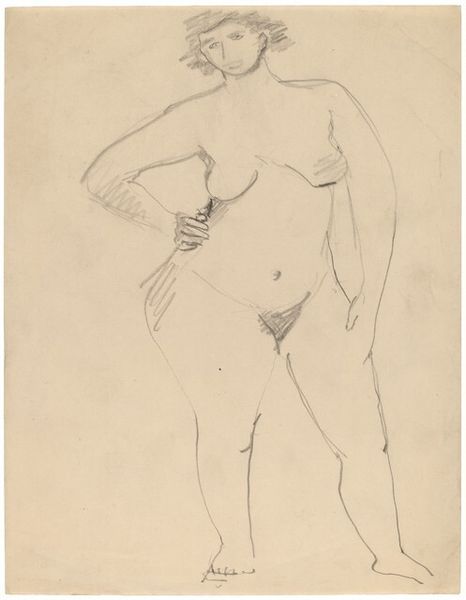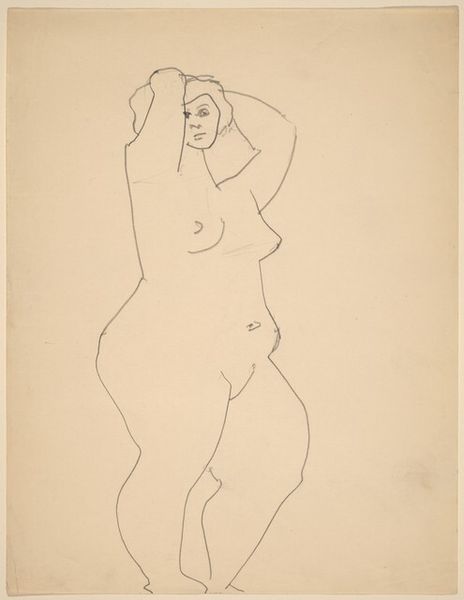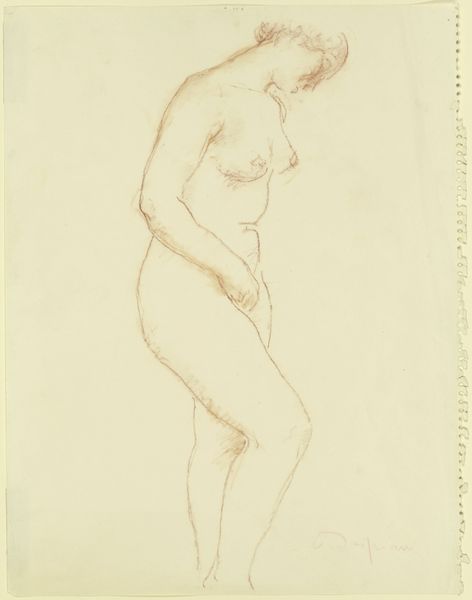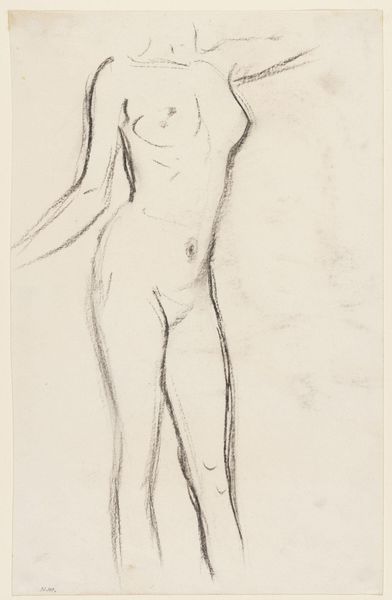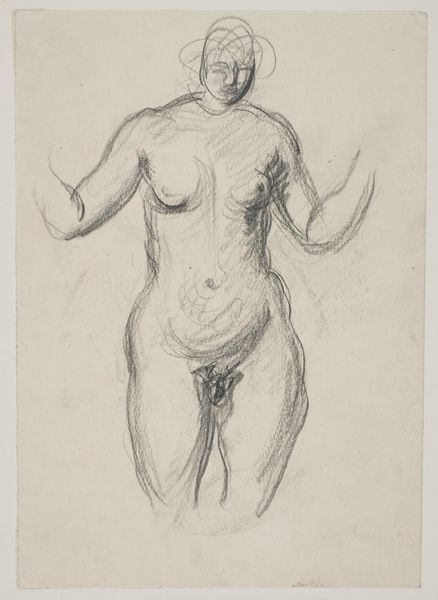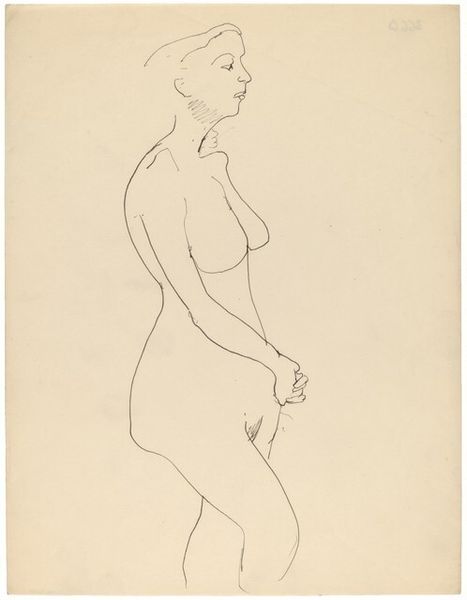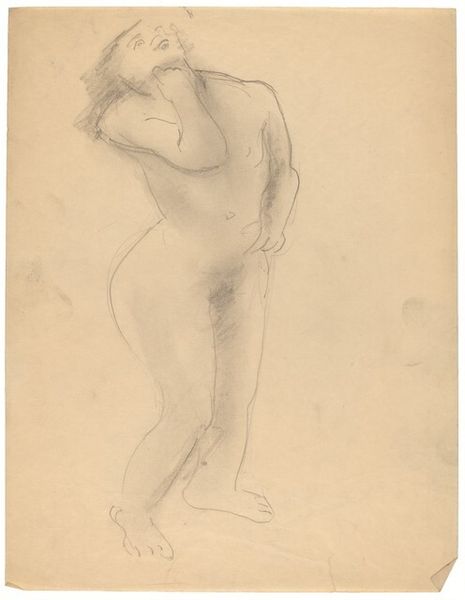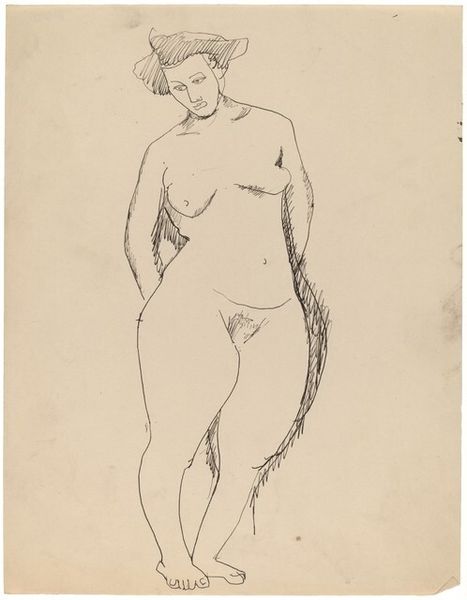
drawing, ink
#
drawing
#
pencil sketch
#
figuration
#
ink
#
expressionism
#
nude
#
modernism
Dimensions: height 330 mm, width 225 mm
Copyright: Rijks Museum: Open Domain
Curator: Standing before us, we have Rik Wouters’ "Standing Female Nude," dating sometime between 1892 and 1916. It’s rendered in ink and pencil, a deceptively simple medium for such an expressive study. Editor: Ah, it jumps right out, doesn't it? So immediate and raw. It's as if Wouters caught a fleeting moment, the model just taking a pause, mid-breath. A quick and fleeting sketch? Or maybe there is an emotional turmoil captured within her gesture. Curator: It does possess that feeling of immediacy. Wouters was deeply influenced by the Expressionist movement, particularly in its raw emotionality and focus on conveying inner experience. We have to also consider this artwork's context of a time where academic, and idealized, nudes were mainstream and institutionalized art practices, Editor: Hmm. "Expressionist" fits. Look at the sketchy lines around her waist and thigh. They feel less about pure representation, but how clothing might confine or define someone and much more about pure feeling –almost claustrophobic. Even though she is nude, in a liberating way of shedding a constraint. Curator: Exactly. The unfinished quality, the visible strokes, all contribute to a sense of vulnerability and perhaps even challenge conventional expectations of beauty. Wouters challenges those standards, and at the same time is playing on the tension and established norms, which is key. The pose is not traditionally graceful; it’s more candid. Editor: She's gorgeous, and also clearly exhausted of this posturing as a conventional model. A person standing still and quiet under scrutiny – like a bird in a cage almost, an analogy that can work very well if we focus on the expressive line-making which in that part, remind me more and more to Ernst Haeckel than other contemporaries. The detail work –and abstraction– is similar in character to scientific, yet whimsical drawings that came before modern art history. Curator: An astute observation that makes a clear example to the dialogue and interaction of socio-political matters into art practice. And also serves as an apt reminder, I believe. It demonstrates art history being full of surprise encounters, I reckon. Editor: Aye, an ever evolving exploration, indeed! Thank you.
Comments
No comments
Be the first to comment and join the conversation on the ultimate creative platform.
